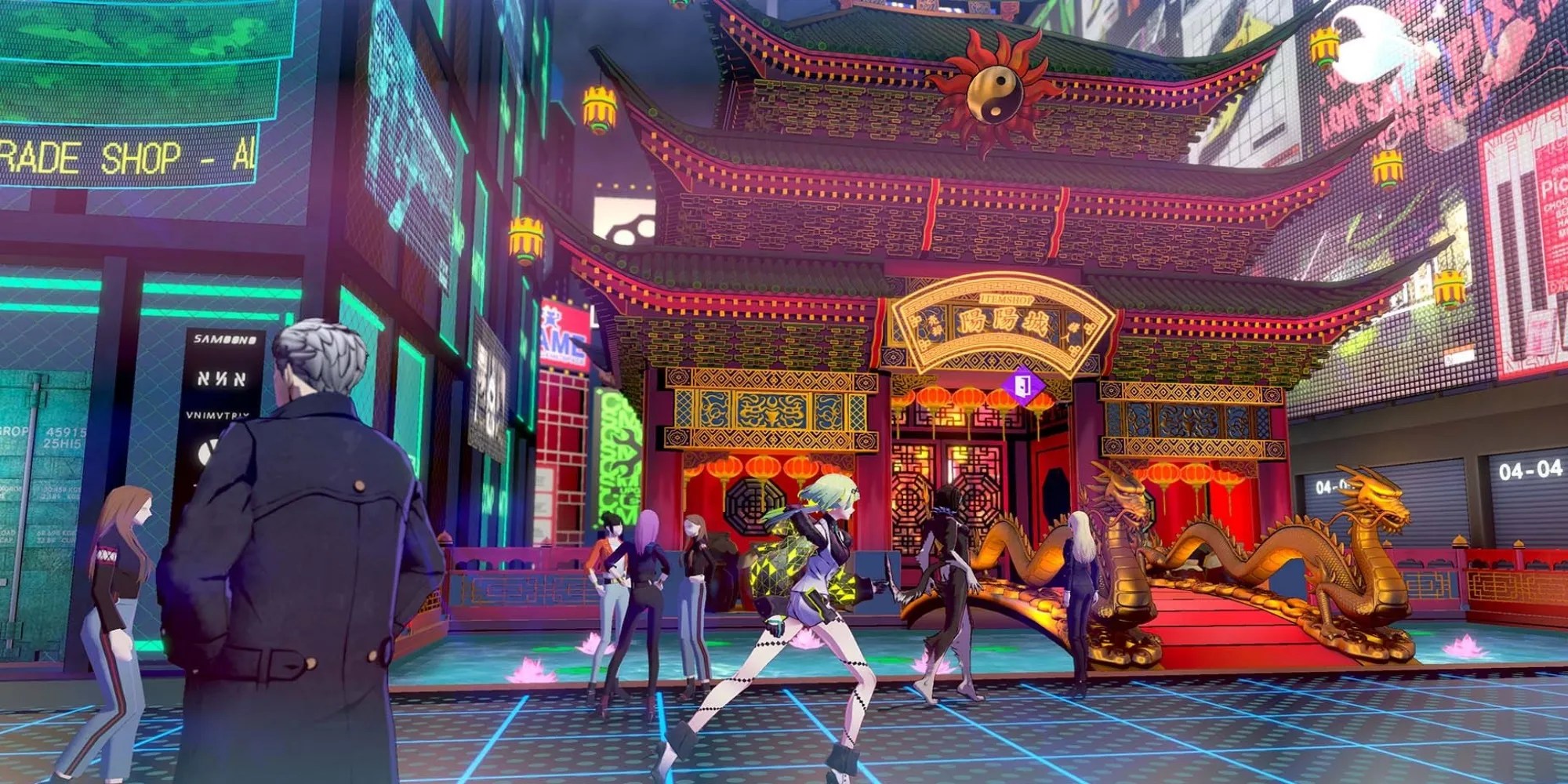Soul Hackers 2, a sequel to the 1997 gameDevil Summoner: Soul Hackers, has been released to the gaming world for some time now. Players connect with the main character, Ringo, on a journey to stop Iron Mask from destroying the world in a story filled with betrayal, crawling through dungeons, and fighting demons. Fans of theDevil Summoner: Soul Hackersgame have jumped on it with mixed reviews, and the general sentiment is thatSoul Hackers 2did quite a good job, although it could have done with some improvements in certain aspects. In these reviews, fans have noted some similarities to other JRPG titles. Set in a futuristic cyberpunk version of Japan,Soul Hackers 2appears to draw inspiration from otherShin Megami Tenseigames. The most striking resemblance is from thePersonaspinoff franchise, as they come from the same developer, Atlus.
Given the standards set by the highly successfulPersonaseries, it is only natural for gamers to compare it to other titles from Atlus. While these comparisons may be unfair, a lot of players have included direct contrasts between both games in their reviews. At least, there is a fair balance of positives and negatives in most of these, showing thatSoul Hackers 2has its own identity outside ofPersona. For one,Soul Hackers 2is notably easier in difficulty thanother titles in theShin Megami Tenseiseries, which is a fact that bothers quite a few fans. The plots of these games are very different, but they share many similarities, such as the popular Demon Fusion mechanics, recruitable Demons, and a turn-based combat system. In particular, the combat system seems to be cut from the same cloth. Atlus appears very satisfied with their developed combat mechanics since these mechanics are employed in multiple games. However, there are a few key differences.

RELATED:The November Soul Hackers 2 Update Sets an Interesting Precedent for Persona 6
The Combat Systems of Soul Hackers 2 and Persona Have Many Differences
Soul Hackers 2mainly uses humans as playable characters likePersona 5, equipping them with several melee and range weapons, along with elements such as fire, ice, and lightning. Each playable character is equipped with demons and the ability to switch its equipped demons during a battle, which permits a host of different configurations. In the case ofPersona 5, no playable character can change their Personaexcept Joker.
Soul Hackers 2uses the Stack system of Press Turn mechanics, where the player gets an increase in a counter at the top right of the screen each time they strike at an enemy’s elemental weakness. At the end of the player’s turn, the avatar - Ringo - summons a Sabbath using her team of demons to cause extra explosive damage to all enemies. The Sabbath attack gets stronger as the player’s Stack increases. This combat move is comparable to the All-Out-Attack seen inPersona 5, which causes a great deal of damage to multiple enemies in an area.Soul Hackers 2’s Stack systemdiffers from the All-Out-Attack in terms of usage. The All-Out-Attack can only be used when an enemy has their down gauge fully depleted. However, the requirements for an All-Out-Attack differ for some Persona releases.

Persona 5demands that all enemies get knocked down after their gauges get depleted before the All-Out-Attack gets summoned, whilePersona 5 Strikers’All-Out-Attackdoes not need the enemies to get knocked down, but the down gauges must be depleted. This gauge usage is one area of difference in the combat systems betweenSoul Hackers 2andPersona.
RELATED:How Soul Hackers 2’s Soul Levels Compare to Persona’s Social Links and Confidants
Dungeons and Social Systems are Unique
The turn-based combat seen inPersona 5had more detail and innovation,bringing a new feature called Baton Pass. Baton Pass offers a social system, which has an important role to play in the combat system, using Confidants to pass the “One More” skill move to another party member. Passing “One More” from one teammate to another boosted the attack and recovery power of the receiving teammate, ready to inflict more damage on their enemies. A social system on the scale and importance of this level is not seen inSoul Hackers 2, although there is a social element in the form of “friendship levels” among demons. Demons who have advanced sufficiently in the friendship levels can gift rare items to Ringo.
Another difference between the games is the absence of demon negotiation from theSoul Hackers 2game.Persona 5equips the protagonist, Joker, with the option to start a dialogue with various demons and convince them to join their crew if the correct dialogue options are selected.Soul Hackers 2uses a different mechanic called Demon Recon, where Ringo scouts dungeons for potential allies using her existing demons. Sometimes, a fee gets charged in exchange for the allegiance of these allies, but no negotiation takes place.
The real-world-based dungeons inSoul Hackers 2, which allow players to interact and fight with demons in the larger world, have been praised for the exploratory potential it brings to the game.Persona 5, however, keeps demon interaction and combat limited to Palaces, making for a more closed-off experience.Soul Hackers 2also provides optional dungeonsin its Soul Matrix system, which are unlocked depending on the psyches of characters Ringo has Soul Hacked.
While it may be shorter than some of itsShin Megami Tenseicounterparts,Soul Hackers 2makes up for its length with a balance of great combatand social systems. Despite the similarities and the occasional omission of a feature, the turn-based combat inSoul Hackers 2is still very addictive, keeping players glued to their screens for hours on end through satisfying gameplay.
Soul Hackers 2is available now on PC, PS4, PS5, Xbox One, and Xbox Series X/S.
MORE:Persona 6’s Confidants Could Learn From Soul Hackers 2’s Soul Matrix